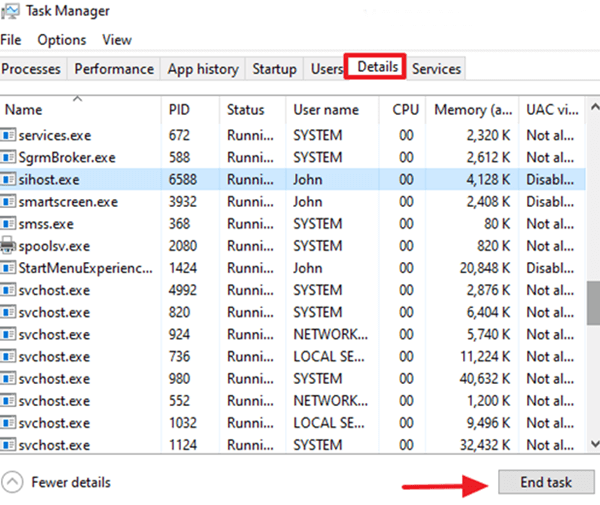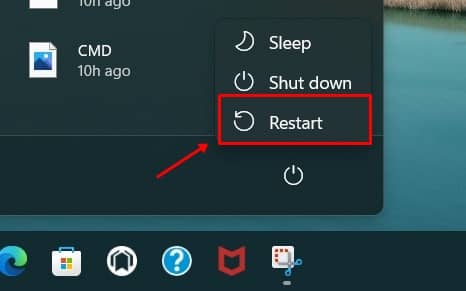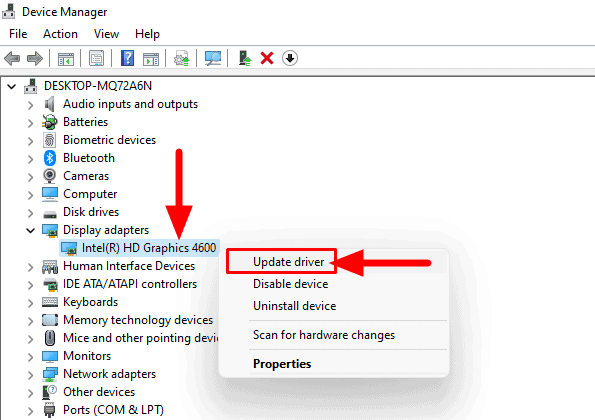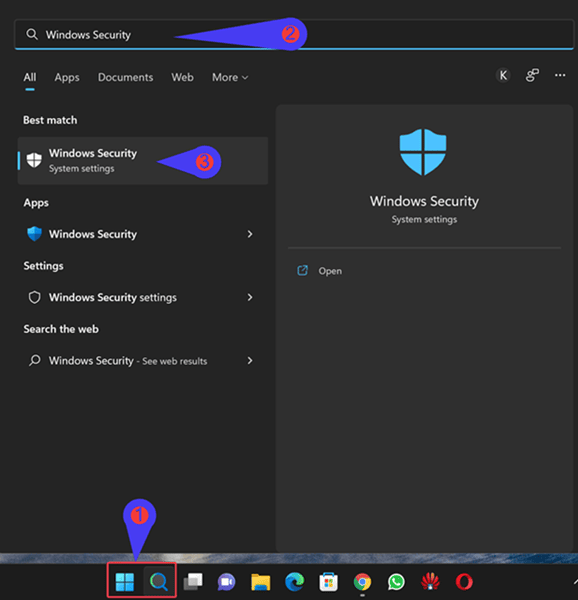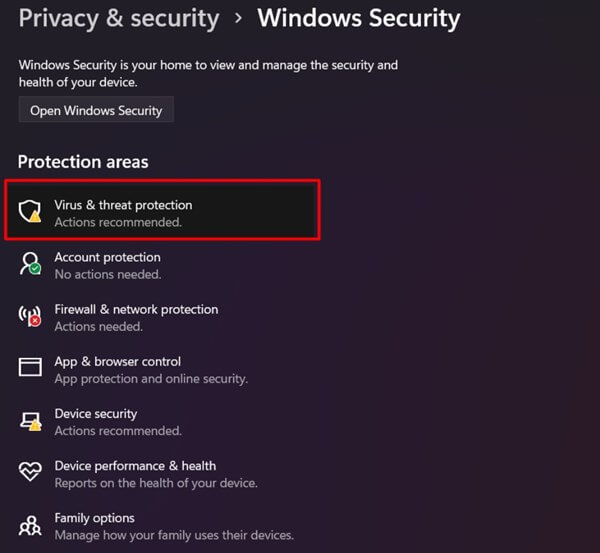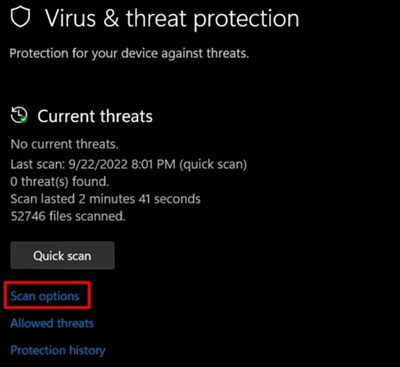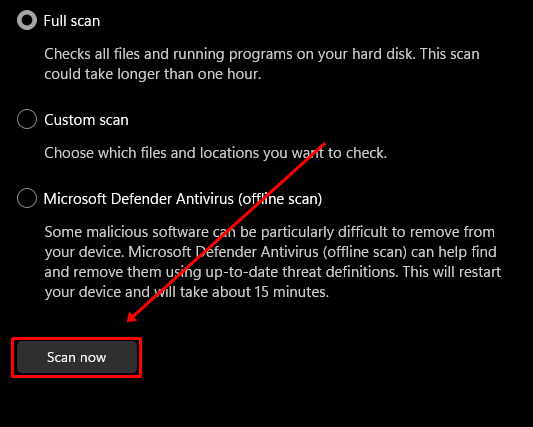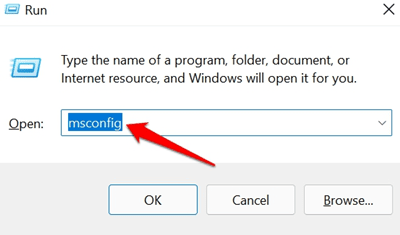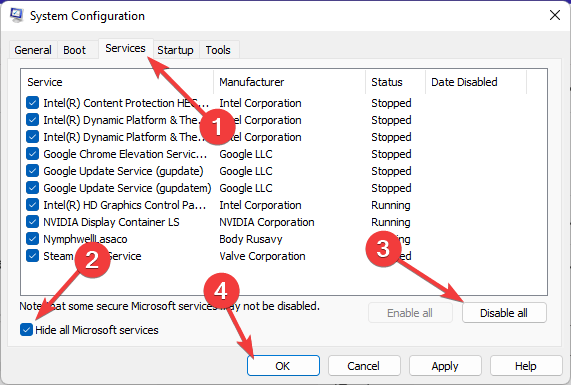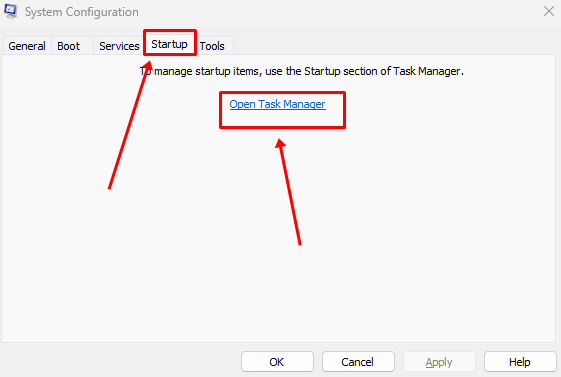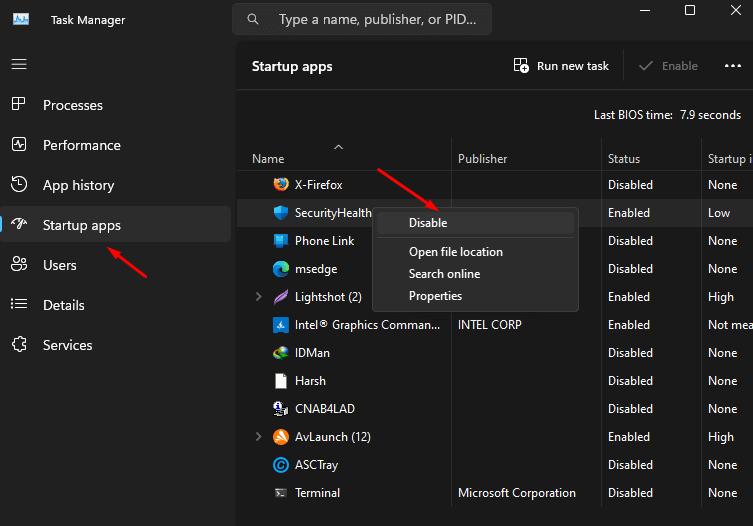It can be alarming to see some unknown processes taking up a major chunk of your memory and CPU and making your PC laggy. Many users have come across the Shell Infrastructure host process doing the same when they opened the Task Manager. This caused many people to question what the shell infrastructure host process is and why it is causing high CPU and memory usage.
Shell Infrastructure host is nothing but a process that is responsible for handling graphics and UI elements. For instance, the taskbar, start menu as well as the desktop you see is handled by this process. Though it is a critical process in Windows, it is very unusual for it to take a major part of your system resources.
This issue can be encountered due to various reasons, it can be due to some bug in the system, malware/virus infecting your PC, or corrupted system files. Here we are with a guide to help you fix Shell Infrastructure Host high CPU and memory usage issues.
Fix Shell Infrastructure Host High CPU and Memory Usage
We will be starting with the basic steps first which are easy to follow and should most probably fix the issue and will save you the hassle of following other methods. Let’s go through the article to fix this Shell Infrastructure Host high CPU and memory usage.
1. End Shell Infrastructure Host Process
Often the issue can be encountered due to some glitch or bug. If you are facing this issue, you can try ending the process itself and the problem will be solved.
- Launch Task Manager by using Ctrl + Shift + Esc keyboard shortcut.
- Under the Processes tab, look for the Shell Infrastructure Host process.
- Select the process and click on End Task.
2. Restart PC
If the above step didn’t solve the issue then you can restart your PC. Not only system glitches but issues with third-party processes running in the background can be the reason behind Shell Infrastructure Host’s high CPU and memory usage. Restarting your PC will also restart all the processes running on your system and the issue will be solved.
3. Update Windows
Outdated Windows is also a common reason behind the Shell Infrastructure host high CPU and memory usage issues. Check for Windows updates and install the updates to fix the issue.
- Launch Settings by pressing the Windows + I key combo.
- Now, click on the Windows Update tab on the left pane.
- On the right side, click on the Check for Updates button.
- Install all the updates listed on the Settings app.
4. Update Graphics Driver
Not only outdated Windows, but outdated graphics drivers can also cause this issue. We suggest you update your graphics driver to the latest version to fix this issue. Here’s how to do it-
- Press the Windows + X key combo and then click on Device Manager.
- Expand the Display Adapters tab by double-clicking on it.
- Right-click on the graphic card on your PC from the list and then click on Update Driver.
- Select the Search Automatically for Drivers option to update the driver.
5. Run SFC Scan
System files can get corrupted due to various reasons and can be the root cause of this issue. Run the System File Checker (SFC Scan) to scan and fix the corrupted system files. The steps given below will guide you on how you can do it-
- Press the Windows + R key and type cmd. Press Ctrl + Shift + Enter and then in the UAC prompt, click Yes.
- In the Command Prompt, execute the command below-
-
sfc /scannow
-
- Once the scan completes you close the Command Prompt and restart your system.
6. Perform Antivirus Scan
Scan your system for viruses and repair the damage caused by them to fix Shell Infrastructure Host high CPU usage. You can run Windows Security scan, but if you have third-party software, then you can use that either.
- Launch Windows Security from the Start Menu.
- Now, click on Virus & Threat Protection.
- Click Scan Options.
- Select Full Scan and click the Scan Now button.
7. Run DISM Scan
The next thing to do is run the DISM Scan. If you tried running the SFC scan as well as repairing the damage caused by the virus in the previous two-step, then you can continue with this method-
- First, run Command Prompt as administrator.
- After this, execute the commands given below one after another to run the DISM scan-
-
DISM /Online /Cleanup-Image /CheckHealth -
DISM /Online /Cleanup-Image /ScanHealth -
DISM /Online /Cleanup-Image /RestoreHealth
-
- After executing the above commands, reboot your PC.
8. Perform System Maintenance
Issue still not fixed? You can try running the system maintenance tool on your PC to fix it. This tool is hidden deep within Windows and you will have to access it through Run Dialog Box. Follow the steps given below to do so-
- Launch Run Dialog Box using the Windows + R key combo.
- Here, type the following command and press Enter–
-
%systemroot%\system32\msdt.exe -id MaintenanceDiagnostic
-
- Click on Advanced and then on Run As Administrator.
- After this, click on the Next button to run the System Maintenance tool.
9. Perform Clean Boot
Third-party apps and services on your System can cause Shell Infrastructure Host high CPU and memory usage. Try performing a clean boot to run your system without third-party apps and services and see if that resolves the issue or not.
- Click on the Start icon, search for msconfig and press Enter.
- Head to the Services tab, check the Hide All Microsoft Services option and click on Disable All.
- Click on the Startup tab and then click on Open Task Manager.
- Right-click on a startup tab, and then click on Disable. Do this for all Startup apps here.
- Now, in the System Configuration window, click on Apply and then on OK.
- After this, restart your system to perform a clean boot.
Check if the issue is still encountered after the clean boot. If you still face the issue then you can reset your PC.
Bottom Line
The above steps should fix the Shell Infrastructure Host high CPU and memory usage. In case you started facing this issue after making some changes to your system like updating the system, installing driver update, etc then you can perform a system restore. If the above steps didn’t solve the issue then you are left with no other option than to reset your system.

